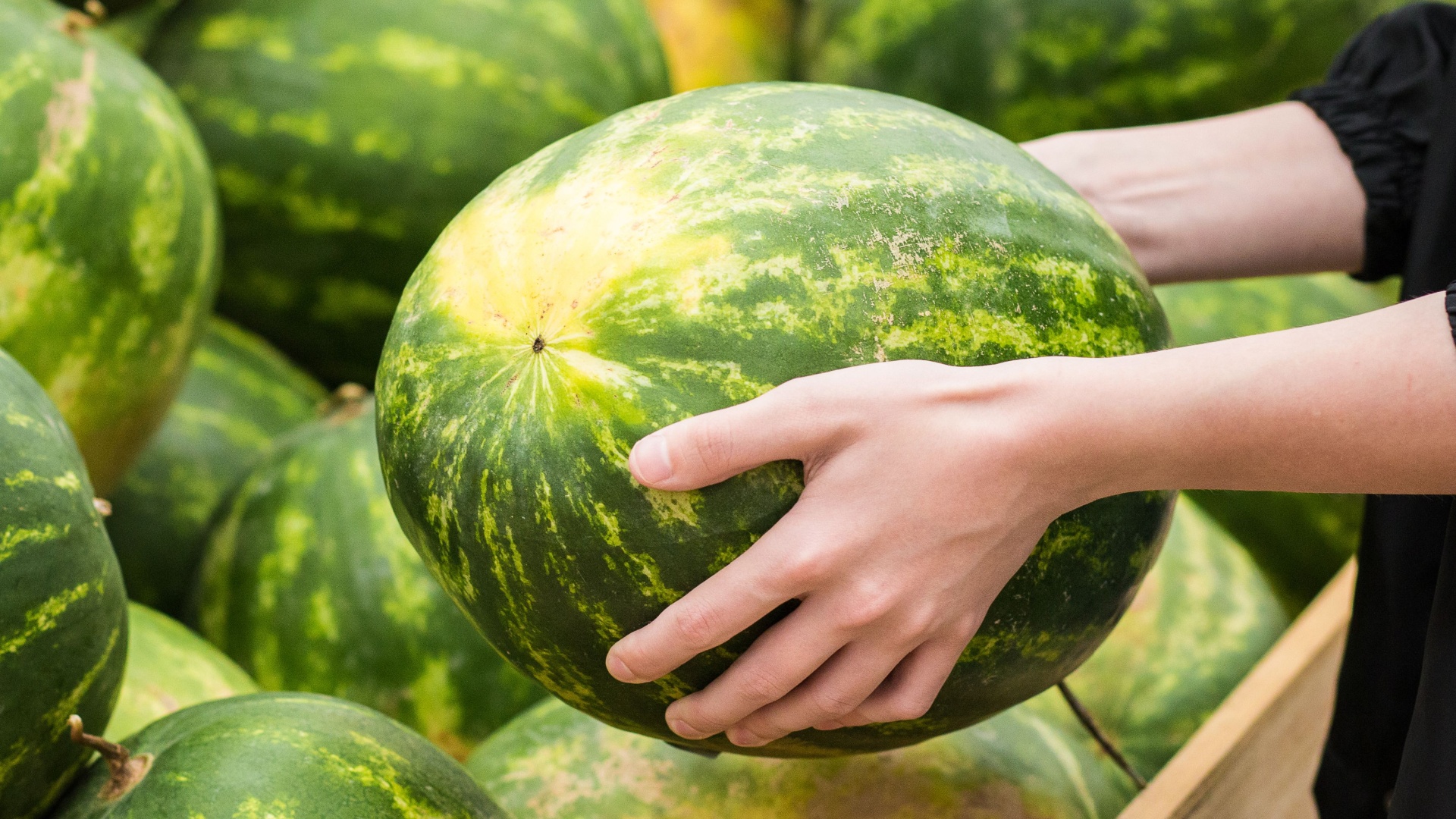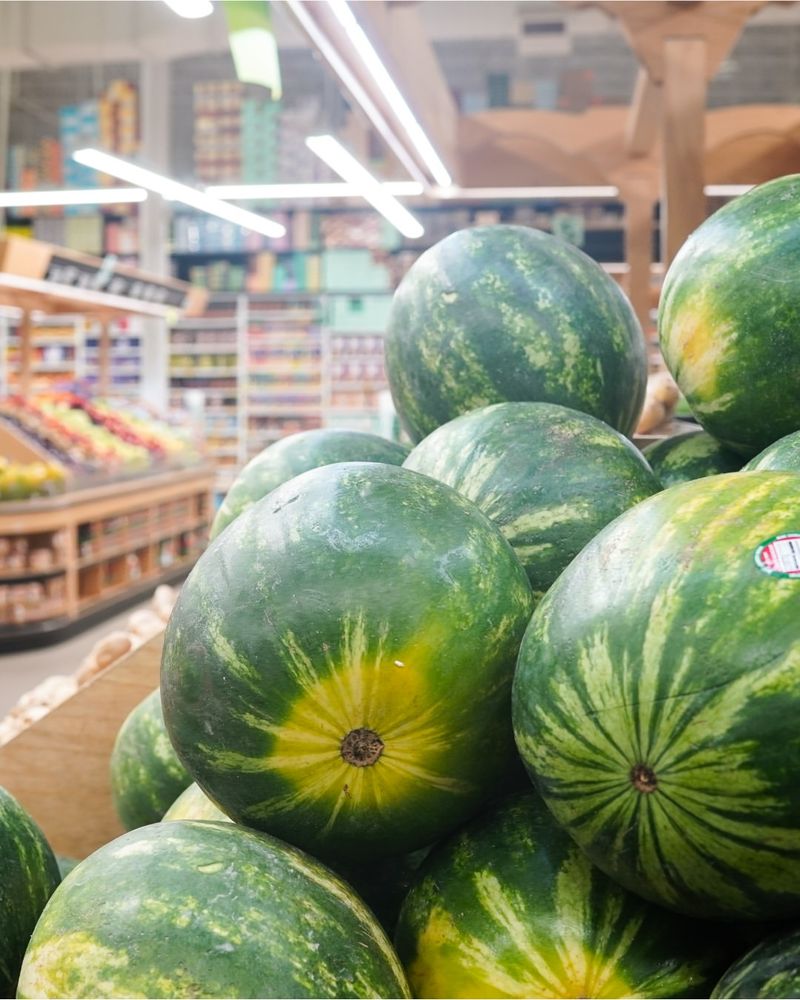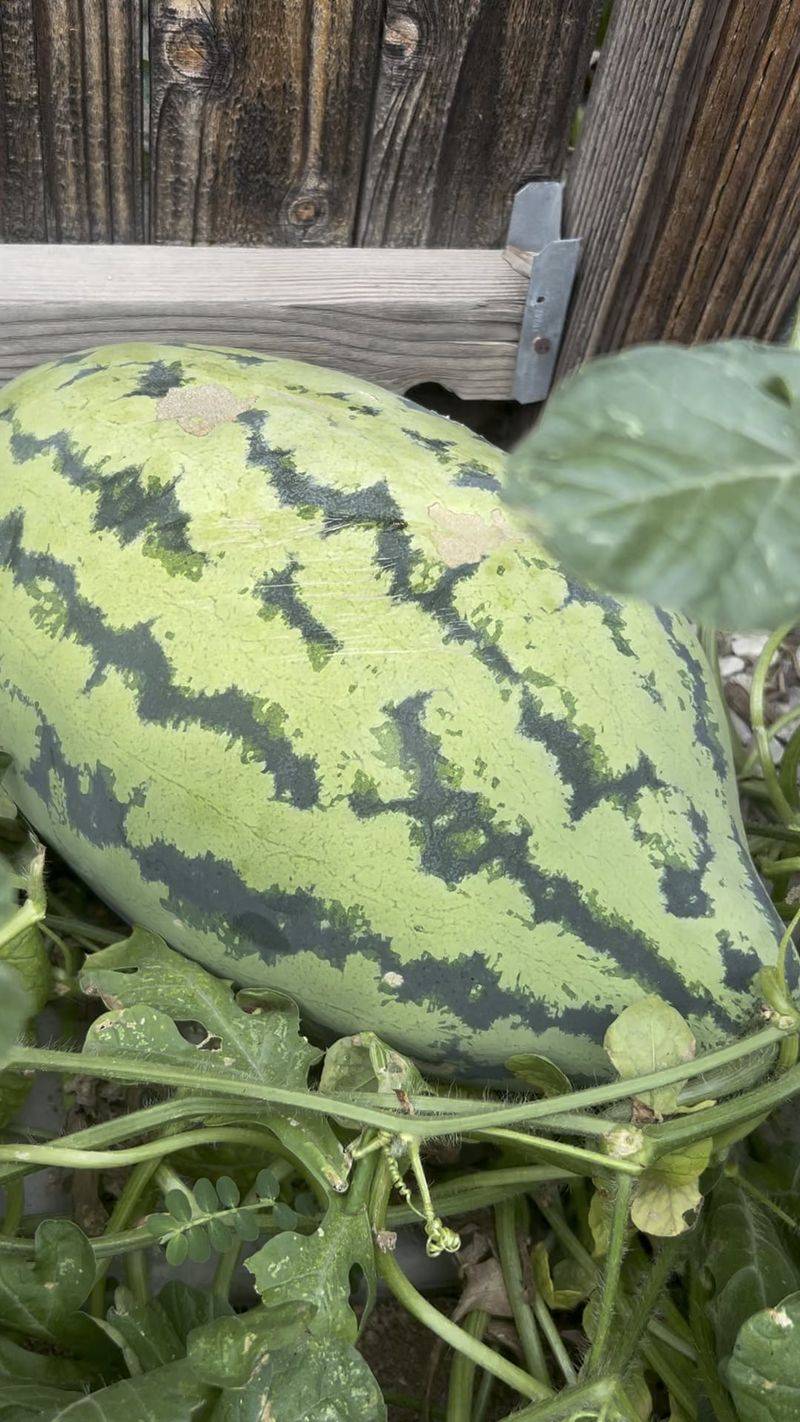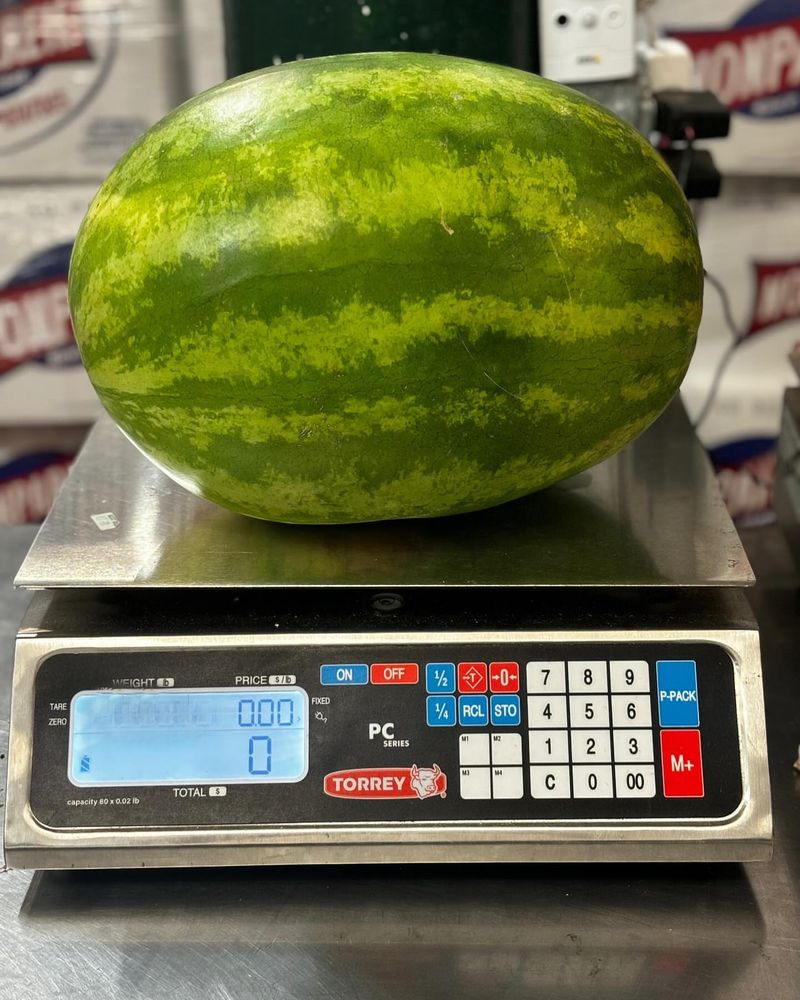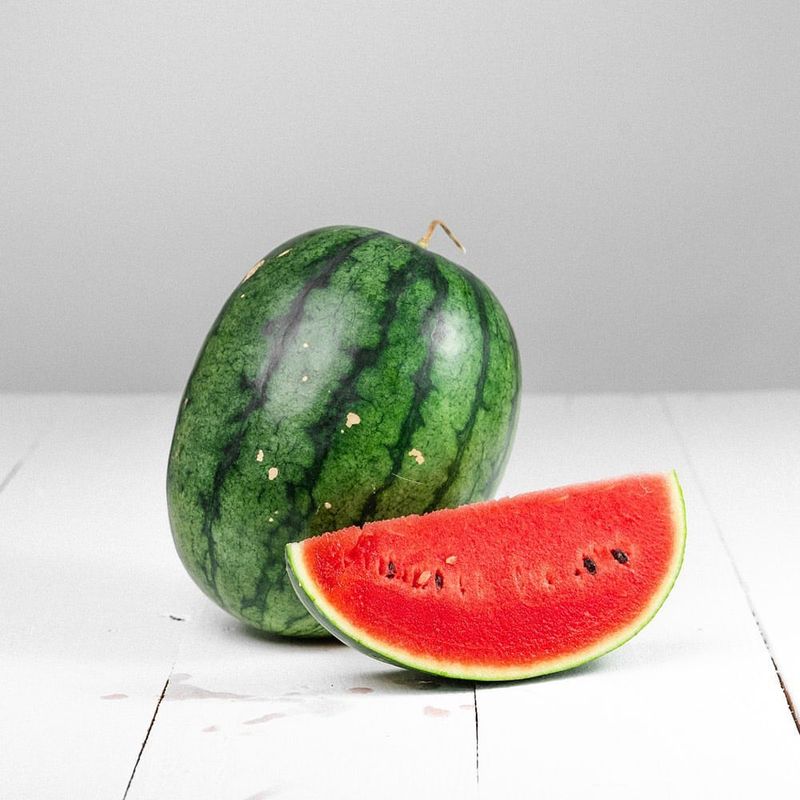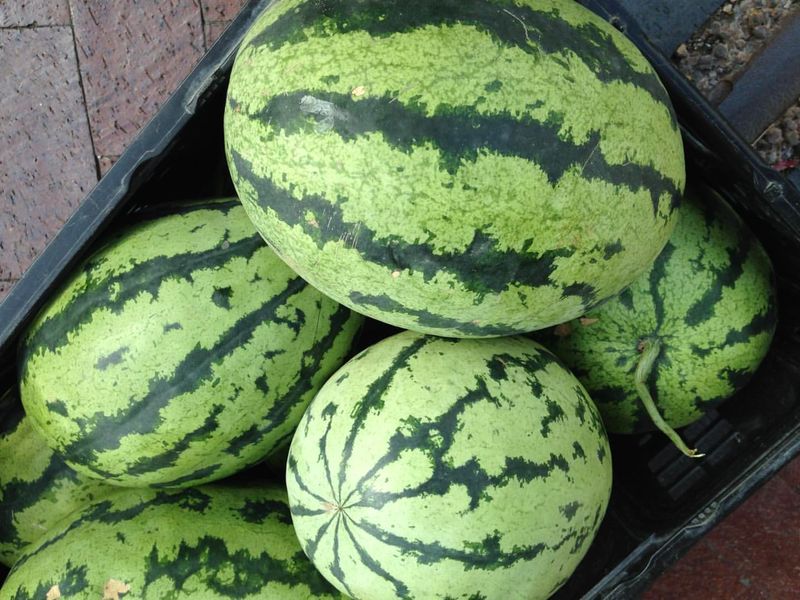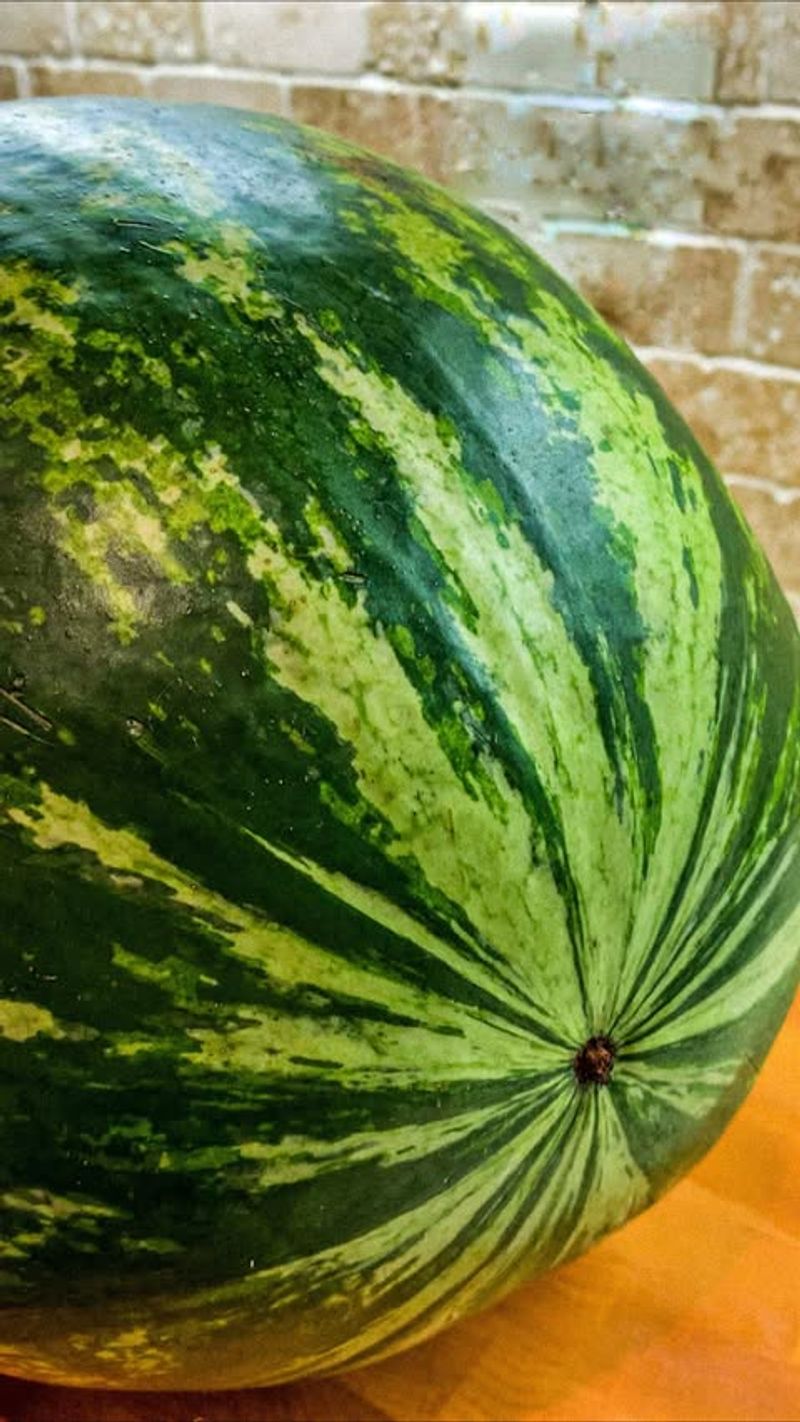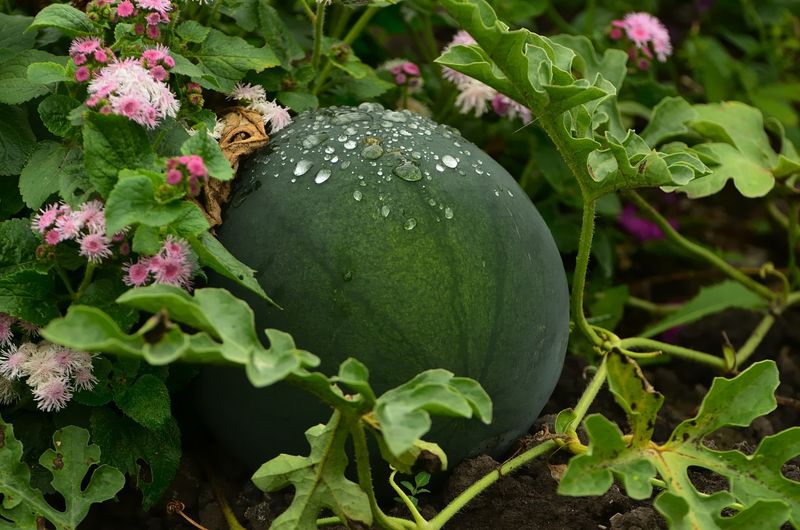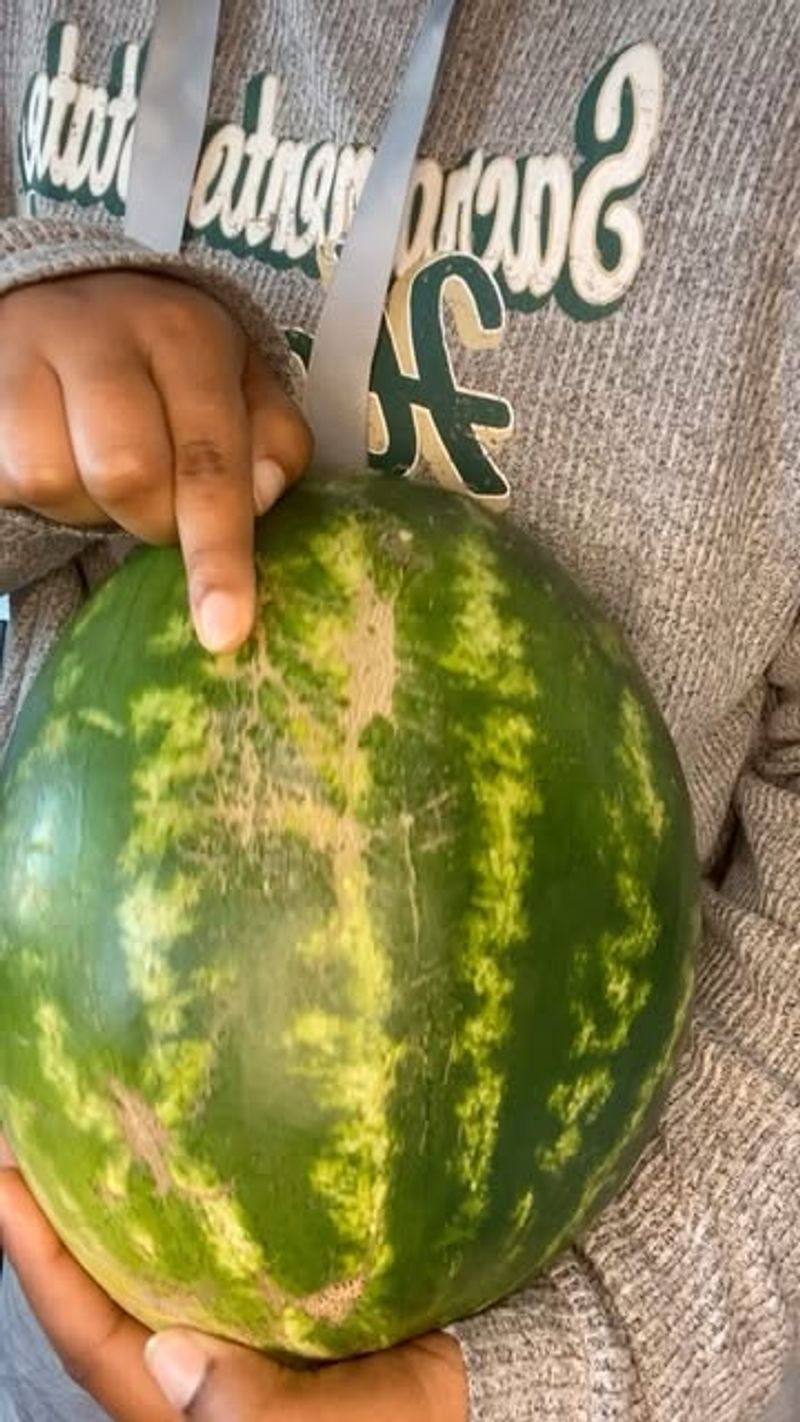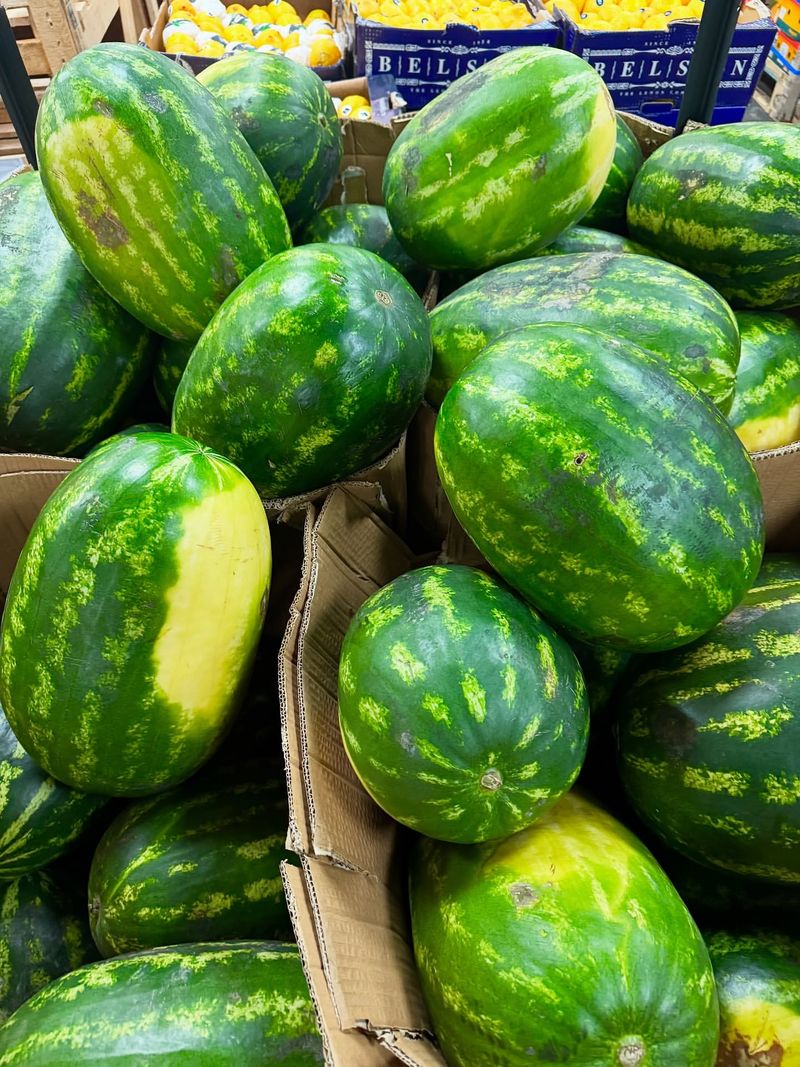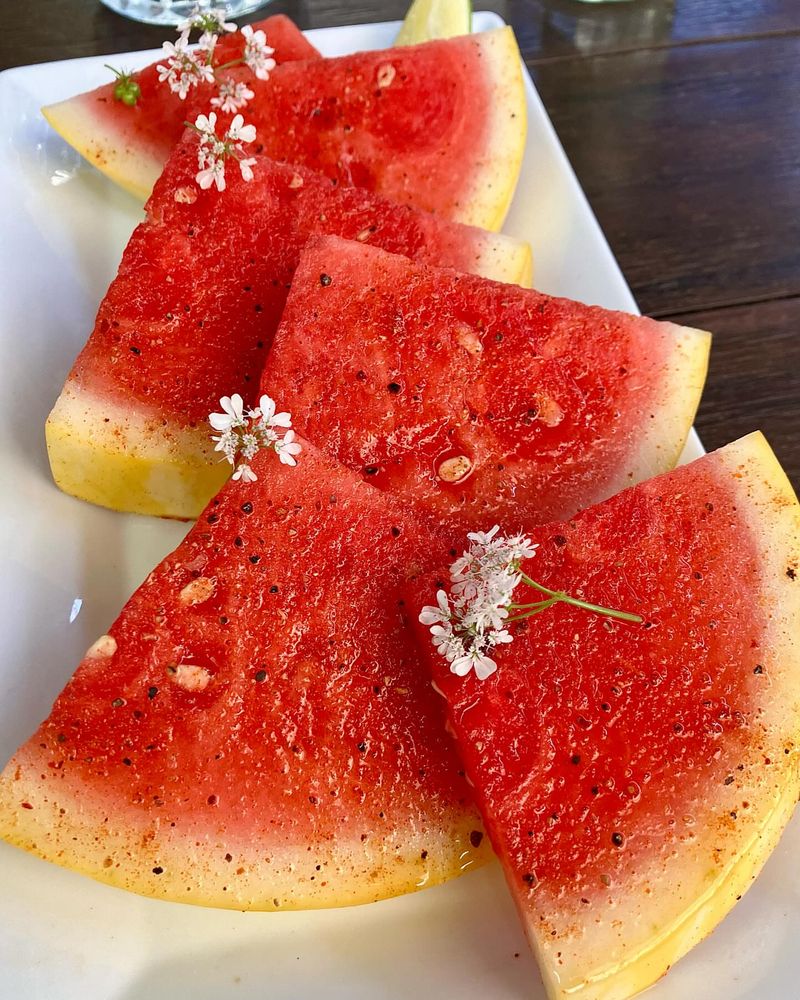Picking a watermelon shouldn’t feel like a gamble. Once you know what to look for—like field spots, sound, and shape—you’ll never bring home a bland one again.
From the grocery aisle to the farmers market, these foolproof tips will help you spot a juicy, sweet watermelon every single time. No more guessing—just crisp, delicious success.
1. Look for the Field Spot
That yellowish patch on the watermelon isn’t a flaw—it’s actually a ripeness indicator! The field spot shows where the melon rested on the ground while growing. A creamy yellow or orange-yellow spot signals a ripe, sweet watermelon.
Avoid melons with white or greenish spots, as they were likely picked too early. The deeper the yellow color, the longer the melon ripened in the field, developing those delicious sugars we all crave.
2. Tap and Listen
Give that watermelon a gentle knock with your knuckles and listen carefully! A ripe watermelon produces a deep, hollow sound—like thumping a drum. Underripe melons sound more solid and dense.
Try comparing several watermelons side by side. Your ears will quickly learn to recognize the distinct hollow resonance of a juicy, ready-to-eat melon. Think of it as the watermelon’s way of saying “I’m perfect inside!”
3. Check the Weight
Hefty watermelons pack more juice! Pick up several watermelons of similar size and compare their weight. The heavier one will likely be juicier and more water-filled.
A watermelon is about 92% water, so more weight means more of that refreshing goodness inside. Don’t be afraid to lift several melons during your selection process—your arms might get a mini-workout, but your taste buds will thank you later.
4. Examine the Stripes
Watermelon stripes tell a ripeness story! Look for melons with well-defined, contrasting dark and light green stripes. These distinct patterns often indicate proper ripening.
Dull, faded stripes might signal an overripe melon, while too-bright or high-contrast patterns could mean it’s underripe. The ideal watermelon has that classic contrast—not too bold, not too faded. Nature’s way of showing the perfect middle ground!
5. Size Matters Less Than You Think
Bigger doesn’t always mean better with watermelons! Medium-sized melons often deliver the sweetest experience. Those monster-sized watermelons might look impressive, but they can sometimes be watery with less concentrated flavor.
Focus on finding a watermelon that feels heavy for its size rather than simply the largest one available. Sometimes the most perfectly balanced flavors come in more modest packages—nature’s little secret!
6. Inspect the Stem End
The tiny stem area reveals big clues! A slightly indented stem end with a dried appearance suggests the watermelon ripened fully on the vine before harvesting. That’s exactly what you want.
Avoid melons with stems still attached or with stem ends that appear fresh, green, or moist. These signs indicate premature picking, which means less flavor development. Remember, a watermelon doesn’t continue ripening after harvest like some other fruits.
7. Feel the Skin Texture
Run your hands over that watermelon! A ripe one has a rough, bumpy texture with a slight give—not hard as a rock. The skin should feel slightly rough against your fingertips.
Shiny, smooth watermelons often haven’t fully matured. The slight roughness develops as the melon ripens to perfection on the vine. Some people describe the ideal texture as similar to basketball pebbling, just more subtle.
8. Look for Sugar Spots and Webbing
Those brown, web-like patterns or tiny dark spots on watermelon skin? They’re actually sugar secretions and pollination marks—signs of sweetness! More webbing often means more pollination visits from bees.
Farmers call these marks “sugar spots” or “bee stings.” They appear when sugar seeps through tiny cracks in the rind. Not every sweet watermelon has visible webbing, but when you see it, consider it nature’s stamp of approval!
9. Avoid Soft Spots and Bruises
Give your watermelon a full inspection for soft areas, dents, or bruises. These imperfections can indicate damage during transport or handling, leading to spoilage.
A perfect watermelon feels firm all around with consistent resistance when you press gently. Soft spots might mean rot has begun inside. Small scratches on the surface are usually harmless, but deep cuts or punctures are red flags to avoid.
10. Consider the Season
Timing is everything! Watermelons taste best when purchased in season—typically summer through early fall in most regions. During peak season, melons have naturally ripened under ideal conditions.
Off-season watermelons often travel long distances and may be harvested prematurely. For North America, the sweetest watermelons usually appear from June through August. Local melons at farmers’ markets during peak season nearly always outshine their grocery store counterparts.

